To many Turks, there are few things better than the smell of frying vegetables coming from their mother’s or grandmother’s kitchen. Şakşuka is a simple dish of shallow fried or deep fried vegetables with a fresh tomato sauce. Delicious!
Upon moving to Turkey, I quickly learned that telling friends I’d be cooking up shakshuka for them would only lead to confusion. Turns out there’s an entirely different Turkish shakshuka, which is what they had in mind.
Well, perhaps not entirely different. If you push it, you could consider both a vegetable ragu of sorts. But they’re certainly different enough to be the source of a surprise when I brought my eggs in tomato sauce to the table.
But what were my friends expecting?
What is Turkish shakshuka?
Şakşuka is a beloved Turkish vegetarian dish of fried vegetables with tomato sauce. It’s served at room temperature rather than hot from the pan. The sauce may be served on top, or mixed with the vegetables. Some also like to serve it with yoghurt.
Whichever way it is done, to many Turks, it’s the flavour of summer. It’s usually considered a meze, though I’ve also had it served as a side dish, even for breakfast! Such is the love for this dish in Turkey.
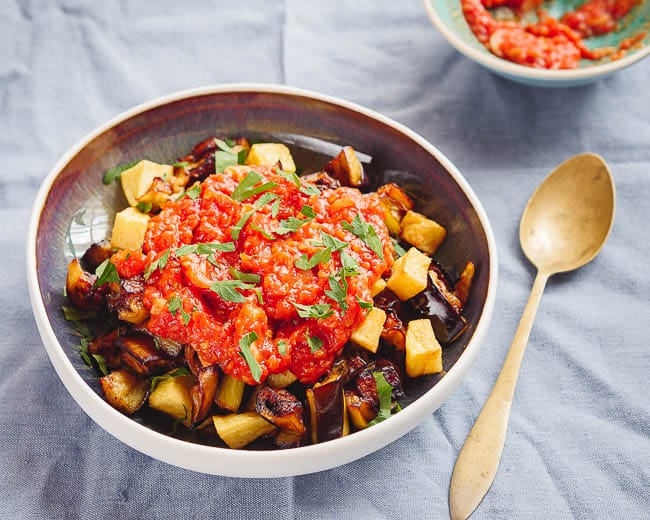
Confusingly, it’s pronounced shakshuka. I’ve not been able to trace the origins to se if they may be the same as the globally better-known Tunisian dish of the same name, though I consider it likely.
What’s for certain, though, is that there are as many variations to şakşuka as there are to shakshuka.
Which vegetables are used in şakşuka?
Eggplant, or aubergine, is usually the most visible ingredient here, though it can be one of several fried vegetables. In fact, it doesn’t even have to include the mighty aubergine, though most people would consider it essential.
Şakşuka may otherwise include any summer vegetable. The most common additions are green peppers, red peppers, potatoes and zucchini. These are all staples of Turkish cuisine and available in abundance at cheap prices all summer long.
I’ve used eggplant and potatoes for this version, but feel free to substitute or add to at wish. If anything, this is the sort of dish it feels wrong to give a firm recipe for. Instead, use what you’ve got at hand and which is good where you are.
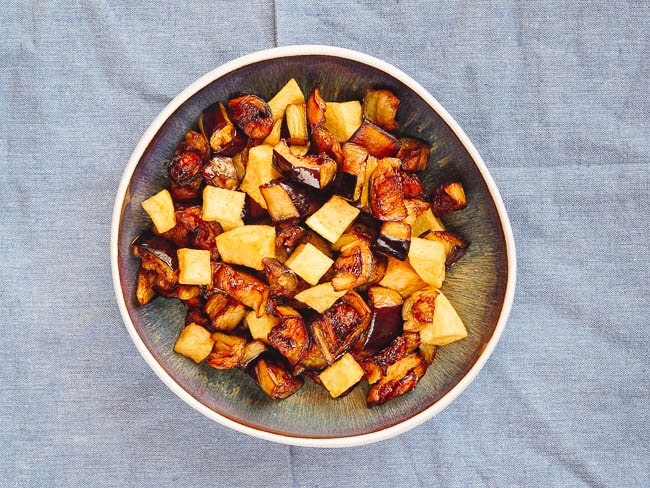
And, of course, there’s the tomato for the sauce. Since this is a summer dish, it’s best to use seasonal, fresh tomatoes prepared in the simplest of ways. Indeed, I find tinned tomatoes or tomato
A note on cooking with olive oil
A common question for recipes of this dish is “do I really need to fry the vegetables? Can’t I just roast them instead? Or use the air fryer?”.
The answer is simple, and it’s “No”.
Or, rather, sure, you can, and it’ll still be very tasty. But as far as I’m concerned, and I would assume most Turks too, you’re no longer looking at a şakşuka, but rather roast vegetables with tomato sauce. Also delicious (I’ve got a recipe for soslu patlican, literally “eggplant in sauce”, which is just that), but still different!
Because more than the vegetables included, or the tomato sauce that brings it together, it’s the oil that will determine how good your Turkish shakshuka meze will be.
In Turkey, as anywhere where olive trees grow abundantly and olive oil is an integral part of the cuisine, the vegetables should be fried in what Westerners refer to as extra virgin olive oil. To locals, this is just “olive oil”. The refined “regular olive oil” is a processed oil, treated by heat and chemicals. It’s often subject to blending with other oils to lower the prices, whether labelled as such or not.
Contrary to popular myth, extra virgin olive oil is excellent for frying. The lower smoke point is a red herring. Olive oil retains nutrients just as well or better than vegetable oils.
Of course, there’s price to consider too. Extra virgin olive oil is expensive, vegetable oil (and some “regular olive oil”) is cheap by comparison. In dishes where the oil is a very small part of the recipe, which type of olive oil you use will usually not impact the flavour of the final dish.
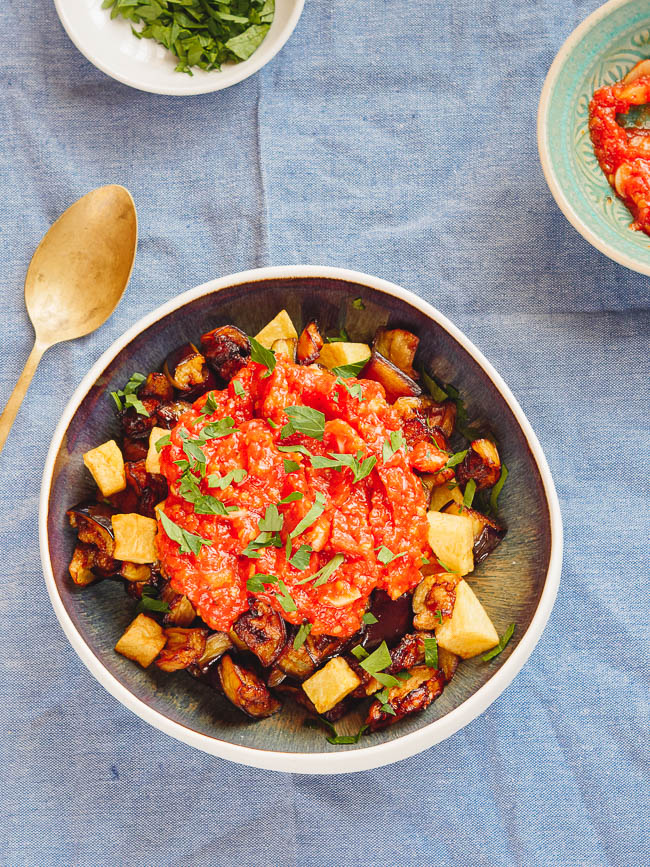
However, in many Turkish and Mediterranean dishes, the olive oil is indeed an important ingredient for achieving the right flavour. An eggplant braised in extra virgin olive oil does not taste the same as one braised in vegetable oil. The good news, however, is that when heated, the flavour difference between different olive oils become less apparent. As such, you can certainly reach for a cheaper, mild extra virgin oil when cooking.
Indeed, and sadly, many Turks can no longer afford to buy good quality olive oil, and instead fry their vegetables in cheaper sunflower oil. But that is a question of affordability, not preference.
Personally, I use local extra virgin olive oil for all my Turkish-style cooking, from salad dressings to frying. But when making dishes like şakşuka, I really can’t do without it. It’s integral to getting the right flavour here.
How to serve şakşuka
In Turkey, şakşuka is traditionally served as a fried vegetable meze, though it also makes for an excellent side dish. I often enjoy it as one of two or three mostly vegetarian recipes.
Since it’s a little heavy on the oil, a zingy salad such as tabbouleh or fattoush is great alongside. If you want to go all Turkish, make a shepherd salad.
If you’re not fussed about keeping it vegetarian, a simple za’atar chicken or za’atar salmon is excellent alongside!
Or why not enjoy it on its own, on a sunny day with a large class of cold beer on the terrace or in the garden?
Turkish shakshuka is usually enjoyed at room temperature. This makes it great for making ahead.
The recipe serves 2-4, depending on what else you’re offering up.
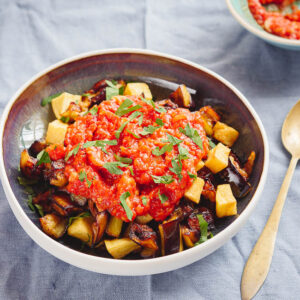
Şakşuka (Turkish fried vegetables)
Ingredients
- 3 medium aubergine (eggplant), partly peeled and cut into 3 cm cubes (c. 600 g/21 oz total)
- 1 large potato, peeled and cut into 1 ½ cm cubes (c. 200 g/7 oz)
- olive oil, for frying (I use a mild extra virgin)
- flat-leaf parsley, finely chopped, to garnish
- salt and pepper
Tomato sauce
- 3 Tbsp olive oil, I use a mild extra virgin
- 4 garlic cloves, finely chopped
- 400 g tomato, shredded or peeled and chopped
- 1 tsp pul biber (Aleppo pepper), (optional)
- salt and pepper
How I make it
- Sprinkle the aubergine cubes with a little salt. Leave for 10 minutes, then wipe completely dry. This helps improve the flavour of the aubergines.
- Meanwhile, heat a large thick bottomed frying pan with high edges over medium heat. Add enough oil to cover by 1 cm.
- Fry the aubergines and potatoes until golden on the outside and soft inside, adding more oil as necessary and turning every once in a while to ensure even cooking. Do this in several batches, making sure not to overcrowd the pan. I do this in four rounds (each vegetable by itself). Each batch will take a few minutes. Drain on kitchen paper.
- Heat another thick bottomed frying pan over medium heat. Fry the garlic in the olive oil until it smells wonderful, but the garlic hasn’t yet coloured, 20-30 seconds. Add the tomato and mix well. Leave to simmer until reduced to a thick sauce. Season with salt, pepper and chili flakes (if you like). Take off the heat.
- Transfer the vetables to a serving bowl. Top with the tomato sauce and scattering of finely chopped flat-leaf parsley. Serve at room temperature, mixing the tomato sauce and vegetables before serving if you so prefer.


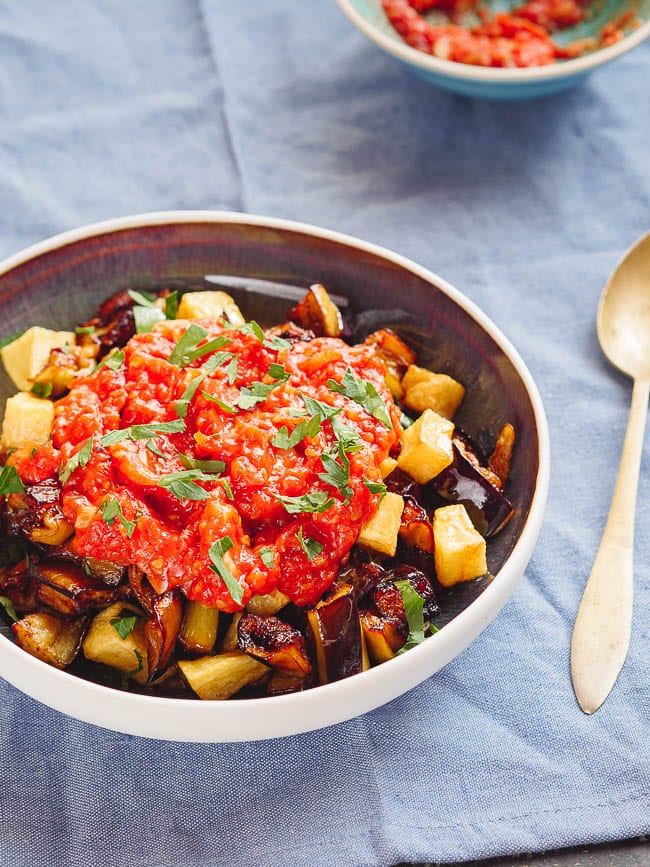


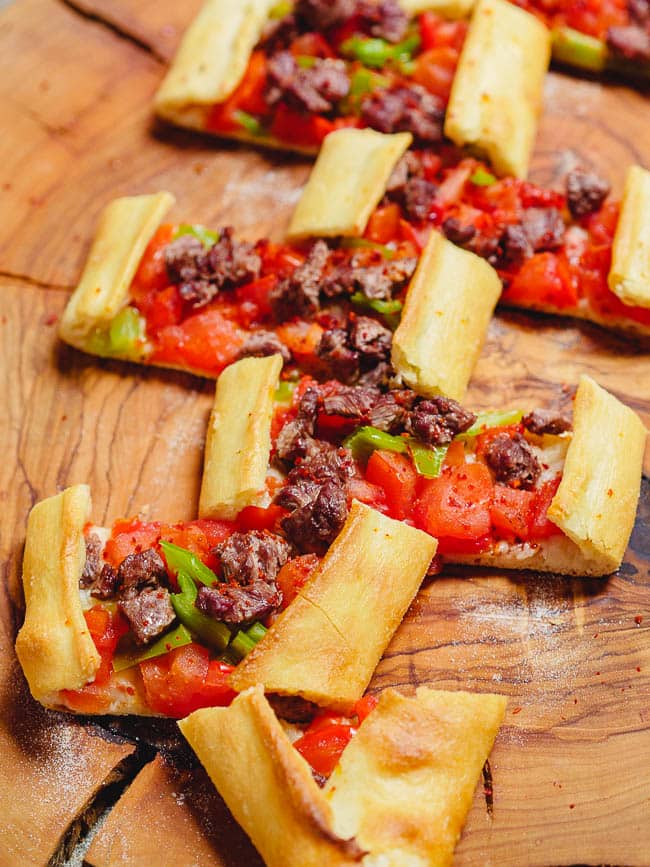
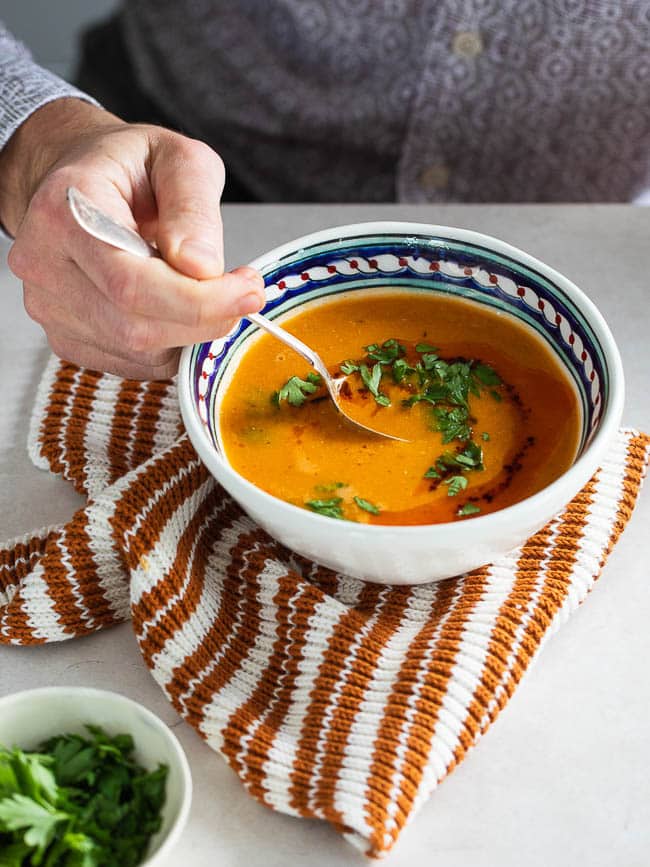
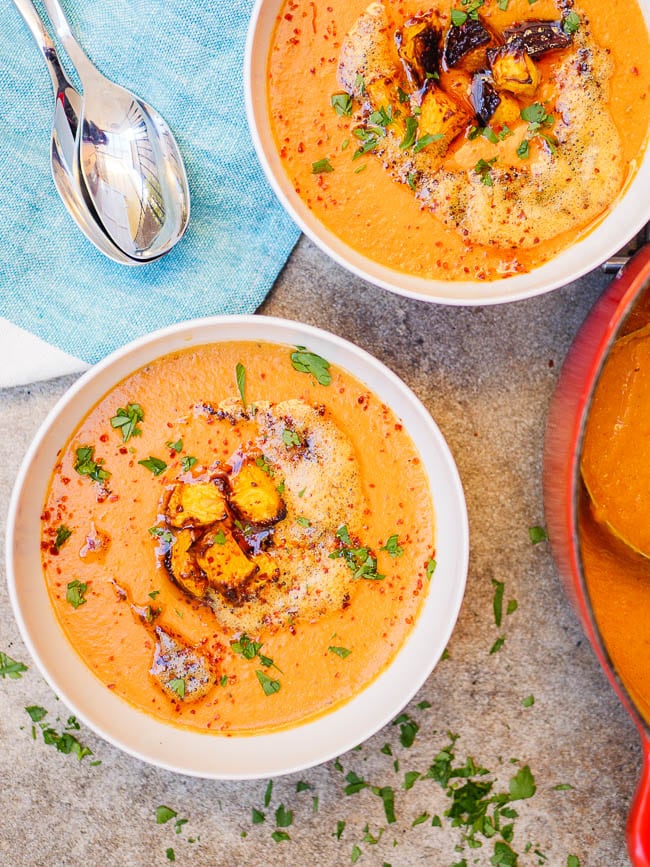
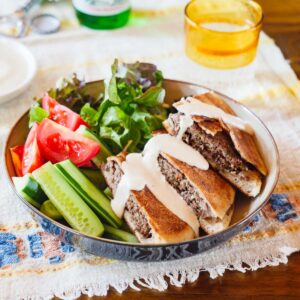
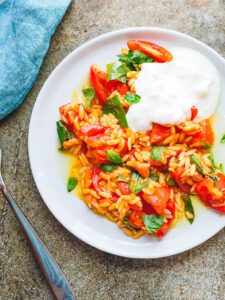
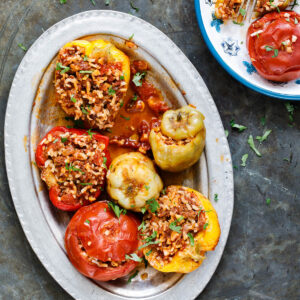




2 responses
Vidar, you are very confusing, you say to use the best olive oil you can to fry the veg, which I do and best to fry the veg individually which I do (same as when I make Ratatouille) and Ratatouille is very similar to this dish, I digress, my point is you say to drain on kitchen paper that will absorb the olive oil, I don’t think the Turks do that as I know the Greeks don’t or the french for that matter, you want/need the oil in the dish for the flavour it now contains from the sugars released from the veggies 🙂
All the best
S
I think this practice varies from home to home. This is how I’ve learned it and prefer to do it (the vegetables still retain a lot of the oil), but if you prefer not to drain the vegetables by all means go for it! Best, Vidar